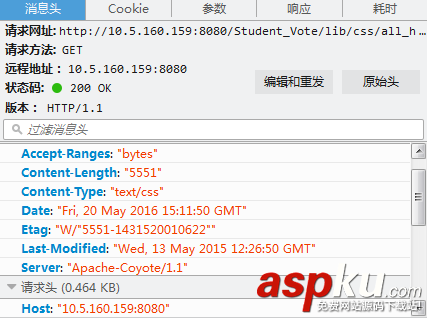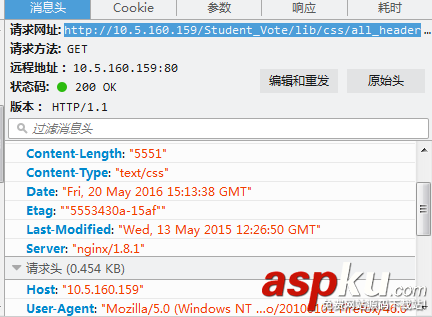博主最近在優(yōu)化一個javaweb項目,該項目之前一直都是使用tomcat處理用戶請求的,無論靜態(tài)還是動態(tài)的東西,一律交給tomcat處理。tomcat主要是負責處理servlet的,靜態(tài)的文件還是交給nginx處理,nginx對靜態(tài)文件的處理比tomcat不是只快了一點,并且Nginx的使用對項目并發(fā)能力有很大的提升。下面主要記錄下主要的配置過程:
實驗環(huán)境:windows
實驗工具:Nginx、tomcat
windows下安裝Nginx非常簡單,去官網(wǎng)下載壓縮包解壓后并且雙擊解壓目錄下的nginx.exe程序即可。然后在瀏覽器輸入localhost可出現(xiàn)下圖,即表示nginx已經(jīng)在工作。

nginx的工作流程是:對外,nginx是一個服務器,所有的請求都先請求到nginx,然后再由nginx對內(nèi)網(wǎng)進行請求的分發(fā)到tomcat,然后tomcat處理完請求后將數(shù)據(jù)發(fā)送給nginx,然后由nginx發(fā)送給用戶,整個過程對用戶的感覺就是nginx在處理用戶請求。既然這樣子,nginx肯定需要進行配置,主要的配置文件是conf文件夾下的nginx.conf,因為我主要是進行了靜態(tài)與動態(tài)分離,所以沒有進行靜態(tài)文件緩存,也沒有進行負載均衡的配置。
#user nobody;worker_processes 2;#error_log logs/error.log;#error_log logs/error.log notice;#error_log logs/error.log info;#pid logs/nginx.pid;events { #nginx默認最大并發(fā)數(shù)是1024個用戶線程 worker_connections 1024;}http { include mime.types; default_type application/octet-stream; #log_format main '$remote_addr - $remote_user [$time_local] "$request" ' # '$status $body_bytes_sent "$http_referer" ' # '"$http_user_agent" "$http_x_forwarded_for"'; #access_log logs/access.log main; sendfile on; #tcp_nopush on; #keepalive_timeout 0; #http1.1在請求完之后還會保留一段時間的連接,所以這里的timeout時長不能太大,也不能太小, #太小每次都要建立連接,太大會浪費系統(tǒng)資源(用戶不再請求服務器) keepalive_timeout 65; #gzip on; server { #nginx監(jiān)聽80端口 listen 80; server_name localhost; #charset koi8-r; #access_log logs/host.access.log main; #這里的/表示所有的請求 #location / { #將80端口的所有請求都轉(zhuǎn)發(fā)到8080端口去處理,proxy_pass代表的是代理路徑 # proxy_pass http://localhost:8080; # root html; # index index.html index.htm; #} #對項目名進行訪問就去訪問tomcat服務 location /Student_Vote { proxy_pass http://localhost:8080; } #對jsp和do結(jié)尾的url也去訪問tomcat服務 location ~ /.(jsp|do)$ { proxy_pass http://localhost:8080; } #對js、css、png、gif結(jié)尾的都去訪問根目錄下查找 location ~ /.(js|css|png|gif)$ { root F:/javaweb; } #error_page 404 /404.html; # redirect server error pages to the static page /50x.html # error_page 500 502 503 504 /50x.html; location = /50x.html { root html; } # proxy the PHP scripts to Apache listening on 127.0.0.1:80 # #location ~ /.php$ { # proxy_pass http://127.0.0.1; #} # pass the PHP scripts to FastCGI server listening on 127.0.0.1:9000 # #location ~ /.php$ { # root html; # fastcgi_pass 127.0.0.1:9000; # fastcgi_index index.php; # fastcgi_param SCRIPT_FILENAME /scripts$fastcgi_script_name; # include fastcgi_params; #} # deny access to .htaccess files, if Apache's document root # concurs with nginx's one # #location ~ //.ht { # deny all; #} } # another virtual host using mix of IP-, name-, and port-based configuration # #server { # listen 8000; # listen somename:8080; # server_name somename alias another.alias; # location / { # root html; # index index.html index.htm; # } #} # HTTPS server # #server { # listen 443 ssl; # server_name localhost; # ssl_certificate cert.pem; # ssl_certificate_key cert.key; # ssl_session_cache shared:SSL:1m; # ssl_session_timeout 5m; # ssl_ciphers HIGH:!aNULL:!MD5; # ssl_prefer_server_ciphers on; # location / { # root html; # index index.html index.htm; # } #}}上面的配置中我把默認的location /給注釋掉了,因為它會攔截所有的請求,無論是動態(tài)還是靜態(tài),還有一個就是對靜態(tài)文件的配置我配置成了javaweb的工作區(qū)間,接下來會說明為什么。
因為之前寫的項目一直以來都是使用jsp內(nèi)置對象來進行目錄的文件訪問,但是使用了nginx一切都需要改變,當我使用了nginx,并且項目沒有進行路徑的修改的時候,總是無法加載靜態(tài)文件,查看日志發(fā)現(xiàn)這樣的錯誤:2016/05/20 18:27:30 [error] 6748#6936: *225 CreateFile() "F:/javaweb/Student_Vote/lib/images/username.png" failed (3: The system cannot find the path specified), client: 127.0.0.1, server: localhost, request: "GET /Student_Vote/lib/images/username.png HTTP/1.1", host: "localhost", referrer: "http://localhost/Student_Vote/index.jsp",大致信息是根據(jù)jsp中文件的配置,nginx將會從/Stdent_Vote(這是我的項目名)/lib/images包中查找靜態(tài)文件,而我又不想對項目文件做太大變化,其實還有一種方法是不使用jsp的內(nèi)置對象,直接使用http://localhost/username.png來代替內(nèi)置對象訪問靜態(tài)文件,但是這樣改要改很多的地方,所以我就直接將web-inf文件夾下的lib文件夾拷到上一個文件夾,也就是該文件夾和web-inf文件夾是兄弟文件夾的關系。
通過上述操作,就實現(xiàn)了動態(tài)與靜態(tài)的分離了,無圖無真相,下面展示效果圖。

上圖可以看到server是“Apache-Coyote/1.1”。tomcat的連接器就是這個。

而上面的server可以看到是nginx,說明對外而言接收請求的服務器是nginx。
以上就是本文的全部內(nèi)容,希望對大家的學習有所幫助,也希望大家多多支持VEVB武林網(wǎng)。
新聞熱點
疑難解答